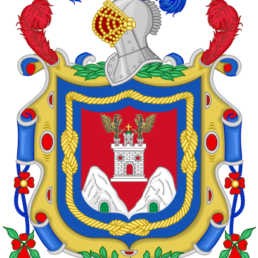By recognizing the value of the city’s ecosystems and protecting them in municipal planning, Quito is setting the standard for low-carbon, climate-adapted urban and rural development.
More than 60% of Quito’s high-altitude territory is covered by vegetation. Yet, as changes in climate come into contact with economic and agricultural developments, ecosystems are being put under increasing pressure. The Ecuadorian mountain capital has therefore initiated efforts to guarantee sustainable city development focused on the city’s fragile ecosystems. Quito manages the city’s natural surroundings and forests as an integral part of its municipal planning and development, pursuing collaborative environmental governance between multiple city actors to enable sustainable land management from all sectors. The city has used geographic information systems (GIS) to map the baseline ecosystem data, estimate future deforestation rates, and prioritize adaptation measures in the most vulnerable ecosystems to ensure continued ecosystem services and natural resilience.
11.2 million tons of CO2 equivalent saved by sustainably managing and conserving landt
Cities100 – 2017
Quito has recognized the importance of forest conservation for preservation of water services, including flood protection and freshwater supply, and has ring-fenced 175,000 hectares of land for protection under its “Municipal Protected Areas” scheme. The city is also reclaiming 60,000 hectares of previously degraded land, which is expected to sequester around six million tons of carbon dioxide. This ultimately contributes to reducing the city’s carbon footprint by 5% every year.
The challenge
More than 56% of Quito’s natural vegetation is deemed vulnerable to climatic changes, including temperature and precipitation changes. With a population of 2.5 million, which is expected to double by 2025, the subtropical highland ecosystems are under growing pressure.
Co-benefits
Economic By enabling access to job opportunities in sustainable agriculture and tourism, rural communities close to natural areas can benefit from urban economic developments.
Environmental Situated at an altitude of almost 3,000 m, Quito has a unique city climate and associated biodiversity. The city is protecting the three Important Bird and Biodiversity Areas, as well as a habitat for the highly vulnerable Andean Spectacled Bear populations native to the area.
Social By conserving natural areas and diversifying economic activities in the city, quality of life will improve for the part of the population that is vulnerable to socio-economic and climate-related impacts.
About Quito
Quito is the capital city of Ecuador, and at an elevation of 2,850 metres (9,350 ft) above sea level, it is the second highest official capital city in the world after La Paz, Bolivia. With a population of 2,671,191 according to the last census (2014), Quito is the second most populous city in Ecuador, after Guayaquil. In 2008, the city was designated as the headquarters of the Union of South American Nations. The historic center of Quito has one of the largest, least-altered and best-preserved historic centers in the Americas.


